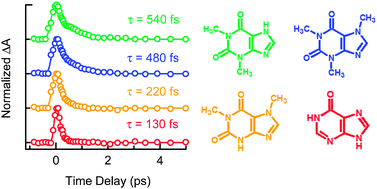This month sees the following articles in PCCP that are in the top ten most accessed in May:
Density functional theory for transition metals and transition metal chemistry
Christopher J. Cramer and Donald G. Truhlar
Phys. Chem. Chem. Phys., 2009, 11, 10757-10816
DOI: 10.1039/B907148B
Solar hydrogen production with semiconductor metal oxides: new directions in experiment and theory
Álvaro Valdés, Jeremie Brillet, Michael Grätzel, Hildur Gudmundsdóttir, Heine A. Hansen, Hannes Jónsson, Peter Klüpfel, Geert-Jan Kroes, Florian Le Formal, Isabela C. Man, Rafael S. Martins, Jens K. Nørskov, Jan Rossmeisl, Kevin Sivula, Aleksandra Vojvodic and Michael Zäch
Phys. Chem. Chem. Phys., 2012, 14, 49-70
DOI: 10.1039/C1CP23212F
Studying disorder in graphite-based systems by Raman spectroscopy
M. A. Pimenta, G. Dresselhaus, M. S. Dresselhaus, L. G. Cançado, A. Jorio and R. Saito
Phys. Chem. Chem. Phys., 2007, 9, 1276-1290
DOI: 10.1039/B613962K
Nanostructure-based WO3 photoanodes for photoelectrochemical water splitting
Xien Liu, Fengying Wang and Qing Wang
Phys. Chem. Chem. Phys., 2012, 14, 7894-7911
DOI: 10.1039/C2CP40976C
The electrochemistry of CVD graphene: progress and prospects
Dale A. C. Brownson and Craig E. Banks
Phys. Chem. Chem. Phys., 2012, 14, 8264-8281
DOI: 10.1039/C2CP40225D
Fragment and localized orbital methods in electronic structure theory
Gregory J. O. Beran and So Hirata
Phys. Chem. Chem. Phys., 2012, 14, 7559-7561
DOI: 10.1039/C2CP90072F
Graphene-based electrochemical energy conversion and storage: fuel cells, supercapacitors and lithium ion batteries
Junbo Hou, Yuyan Shao, Michael W. Ellis, Robert B. Moore and Baolian Yi
Phys. Chem. Chem. Phys., 2011, 13, 15384-15402
DOI: 10.1039/C1CP21915D
Titania supported gold nanoparticles as photocatalyst
Ana Primo, Avelino Corma and Hermenegildo García
Phys. Chem. Chem. Phys., 2011, 13, 886-910
DOI: 10.1039/C0CP00917B
Layer-by-layer assembly as a versatile bottom-up nanofabrication technique for exploratory research and realistic application
Katsuhiko Ariga, Jonathan P. Hill and Qingmin Ji
Phys. Chem. Chem. Phys., 2007, 9, 2319-2340
DOI: 10.1039/B700410A
Carbon materials for supercapacitor application
Elzbieta Frackowiak
Phys. Chem. Chem. Phys., 2007, 9, 1774-1785
DOI: 10.1039/B618139M
Why not take a look at the articles today and blog your thoughts and comments below.
Fancy submitting an article to PCCP? Then why not submit to us today!
Comments Off on Top 10 most-read PCCP articles in May
 We are delighted to announce that Professor Hedi Mattoussi of the Florida State University has joined the Physical Chemistry Chemical Physics (PCCP) Editorial Board as an Associate Editor. His Editorial Office will open for submissions soon.
We are delighted to announce that Professor Hedi Mattoussi of the Florida State University has joined the Physical Chemistry Chemical Physics (PCCP) Editorial Board as an Associate Editor. His Editorial Office will open for submissions soon.













